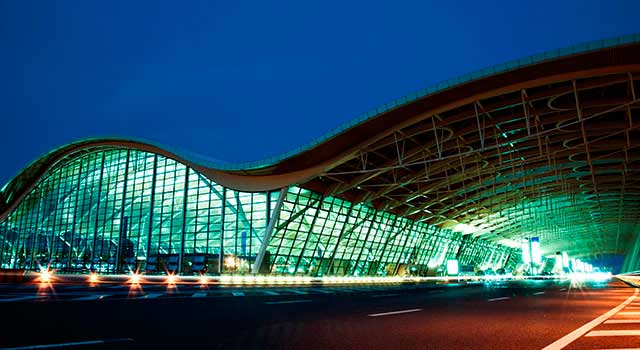
Shanghai airport is the first globally to launch automated clearances with AI support
Shanghai Hongqiao International Airport, one of the major airports in the city, commenced operations on Monday October 15th on China’s and the world’s first automated clearance system for airline passengers using AI controlled facial recognition technology.
Terminal One was the subject of the automated clearance deployment at Shanghai Hongqiao’s, with the new system performing unassisted passenger check-in, luggage check-in, security check and boarding, according to an official digital statement by the Shanghai government.
With an average completion rate of just 12 seconds, the newly automated self-security checking machines can scan passenger IDs and utilize facial recognition to complete a full and accurate security check with higher precision than standard human patterns.
While maintaining the terminal’s hourly processing capacity of 10 million passengers, the quality of the clearance procedure will be be further refined and improved upon, said Dai Xiaojian, the vice-president of operator Shanghai Airport (Group) Co, in a government statement. During rush hour at the airport, the terminal will be able to comfortably and reliably handle the clearance of 2,000 passengers per hour, he said.
The system in Shanghai surpassed its own schedule moving ahead of a planned deployment of facial recognition technology in Beijing’s new 12 billion USD airport, which is designed to handle up to 100 million passengers a year at full capacity.
The new airport, which was designed by Zaha Hadid, is situated about 50 kilometres south of central Beijing, and is expected to use the technology to match passengers to their belongings, thus making unattended baggage easily identifiable and provide real-time high accuracy risk assessments. Facial recognition will also play a part in the airport’s immigration section and for security checks of passengers.
Given its enormous population and its centralized identity databases, China has naturally made leps in facial recognition technology out of necessity. The technology, which is based on biometric computing, i used to automatically identify an individual from a database of digital images, and is today used extensively in everyday life, including in such areas as public security, financial services, transport and retail across the country.
In addition and in 2015, the Ministry of Public Security launched a project to build the world’s most powerful facial recognition database to identify any one of China’s more than 1.3 billion citizens within three seconds. The agency is developing that system with a security company based in Shanghai. Add to that the various cities in China are already using facial recognition cameras to name and shame jaywalkers, universities using the technology to screen students and staff and border checkpoints between Hong Kong Shenzhen that employ the technology to crack down on parallel traders who buy tax-free goods in Hong Kong and resell them in mainland China.
